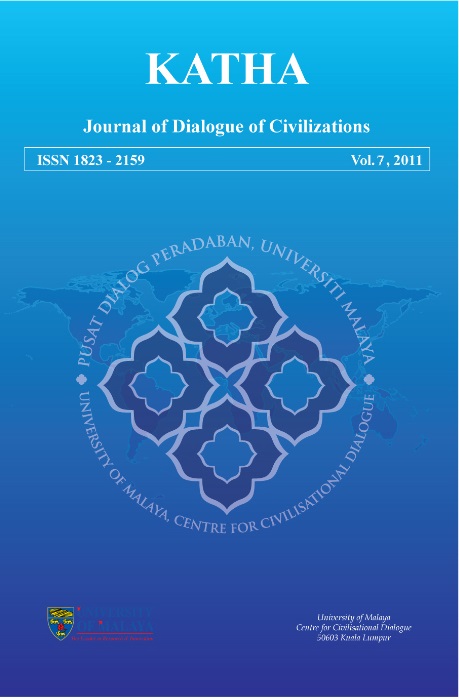The Wisdom and Concept of Man: A Comparative Analysis of the Concept of Man of Confucianism and Islam
Abstract
The study probes into the similarities and differences of the concept of man from the classical text of Four Books and Al-Quran and Al-Hadith. It analyses the Confucian and Islamic ways of man in the spiritual development of personal personality. Confucianism evolves the spiritual personel development by adhering to internally, love and benevolence to others and externally norms and accepted customs. By this, after continuing practice, a virtuous man known as a superior man or a sage will be developed. That is, a kind man of love and care for others and perform no harm but good to the society. Islam however, teachers us that all men are created by God. It is necessary to believe and practice the teachings from the revelations of Al Quran and Al Hadith. The practical way of personal development is following the virtues starting from five-time daily prayers, fasting in Ramadhan and others. Through this, it develops man of great submission to God, known as Muslim, mu'min, shalihin or muttaqyyn. The objective of Confucianism and Islam is the same, that is to develop man of virtues and become people of good personalities. However, in Confucianism, the way is known as heavenly way or (tian). In Islam, it is the straight path mentioned in Al Quran. Muslims also believe God created everything including men. Men are the Khalifaht al-Lah (Khalifatullah) on earth and responsible for all his deeds. All good deed would be awarded and all bad deeds would be punished. There is heaven and hel in the after life. However, Confucianism is silent about the after life. The term (tian) is not elaborated by Confucius or Confucian scholars. There is no afterlife concept in Confucianism.
Downloads
Downloads
Published
How to Cite
Issue
Section
License
Articles submitted to the journal should not have been published before in their current or substantially similar form, or be under consideration for publication elsewhere. Authors submitting articles for publication warrant that the work is not an infringement of any existing copyright and will indemnify the publisher against any breach of such warranty. For ease of dissemination and to ensure proper policing of use, papers and contributions become the legal copyright of the publisher unless otherwise agreed. By submitting a manuscript, the author(s) agree that copyright for the article is transferred to the publisher, if and when the manuscript is accepted for publication. However, it can be reprinted with a proper acknowledgment that it was published in KATHA.

This work is licensed under a Creative Commons Attribution-NonCommercial-NoDerivatives 4.0 International License.




